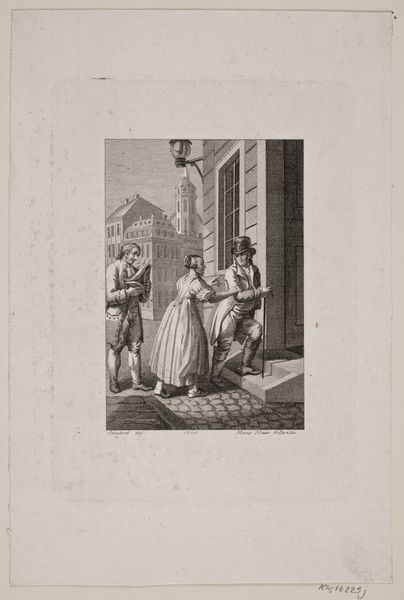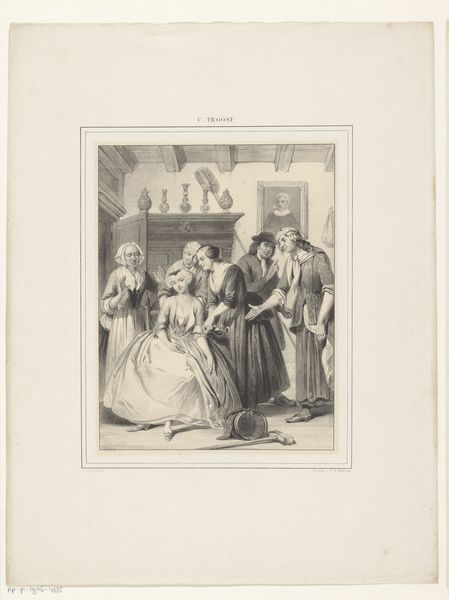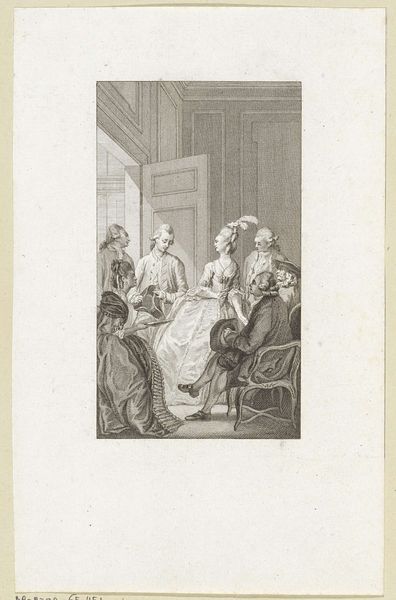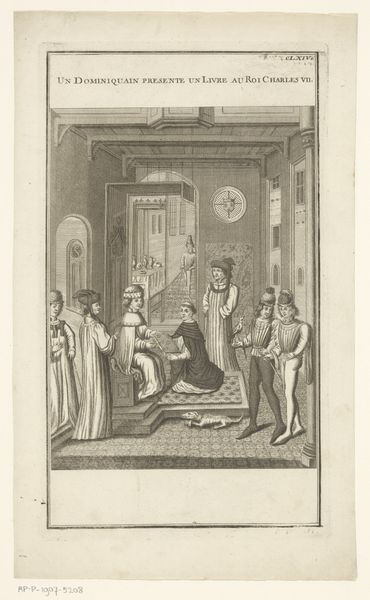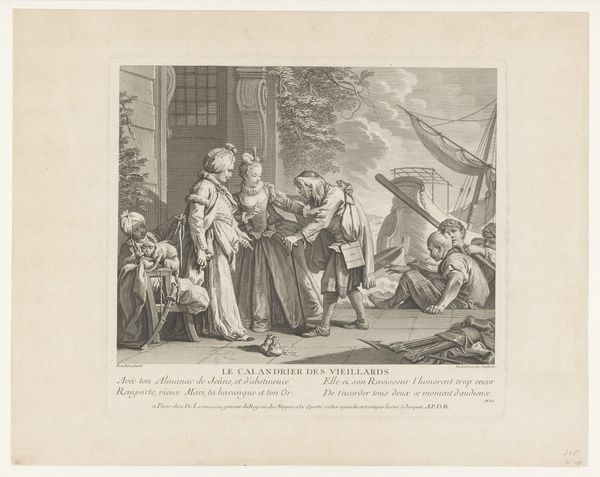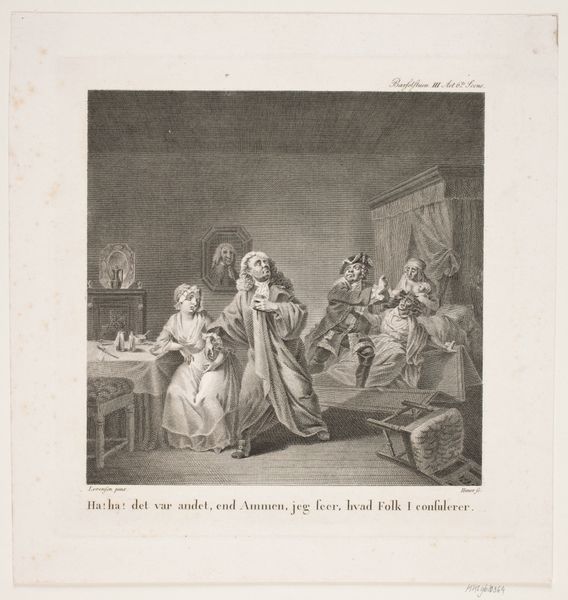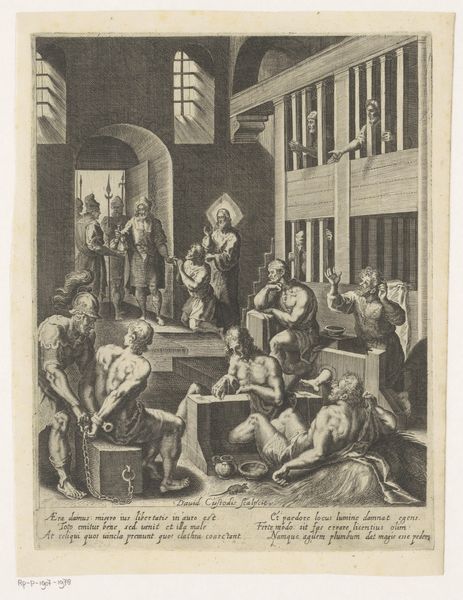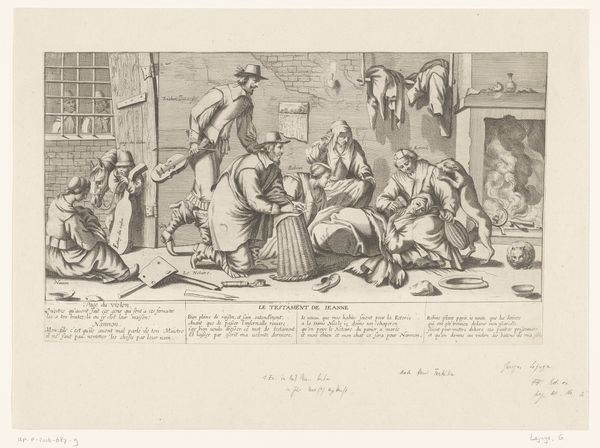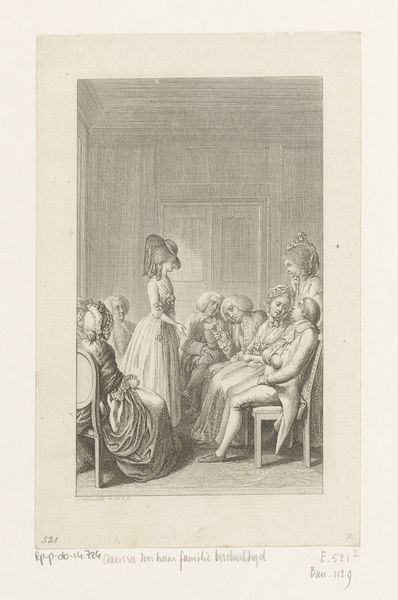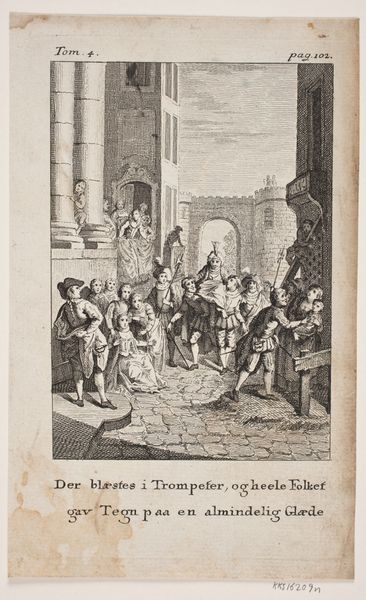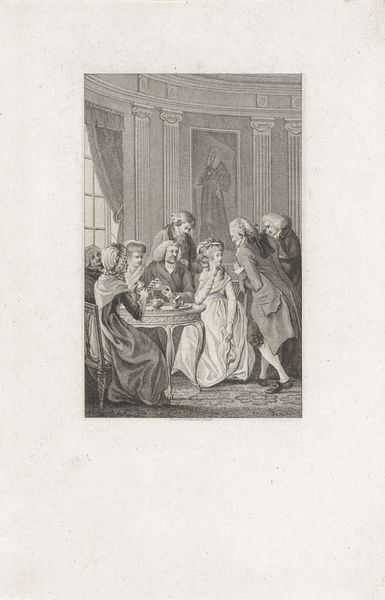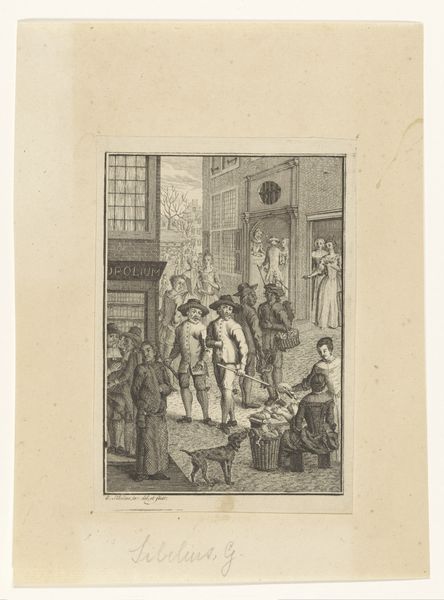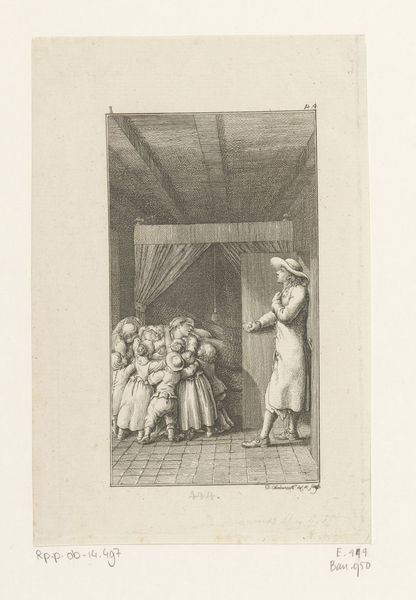
print, engraving
#
narrative-art
#
baroque
# print
#
cityscape
#
genre-painting
#
engraving
Dimensions: height 161 mm, width 106 mm
Copyright: Rijks Museum: Open Domain
Curator: Before us is "Pinksterfeest te Den Haag," or "Pentecost Feast in The Hague," a print rendered between 1732 and 1736 by Bernard Picart, part of the Rijksmuseum's collection. Editor: It’s remarkable how such a small-scale engraving conveys so much bustle. The crisp lines give it a sense of layered activity. It also captures an outdoor ambiance using monochrome. Curator: Indeed. Picart was very meticulous about rendering symbolic meaning in social practice, as seen in the "Coutume de la Pentecôte" subtitle. In the image, you can discern groups enacting some ceremony around a house or building in the city, presumably involving girls adorned with greenery. Editor: Those garlands do look quite striking. As a print, it would have been made with the precise carving of lines onto a plate. It shows the amount of labor necessary to create this, especially thinking of distribution through print culture, allowing more access to the subject in faraway places. Curator: Precisely. Note the juxtaposition between those figures acting out the "Pentecost Feast" and those merely watching from the buildings. It highlights the interplay between participation and observation inherent in cultural performances. It gives insight into that society and how it understands itself in the moment of the Pentecost. Editor: It shows the artist was keen on documenting and presenting social activities of the time. It also brings out questions about social classes from their attires to their roles during Pentecost. Curator: I agree. The symbols displayed in Picart's work carry layers of cultural significance, allowing us to glean a deeper understanding of societal rituals of 18th-century Netherlands, and to reflect on them. Editor: Absolutely, a material study enhances our perception by grounding art inside concrete settings, labor divisions, and systems that formed its creation.
Comments
No comments
Be the first to comment and join the conversation on the ultimate creative platform.
